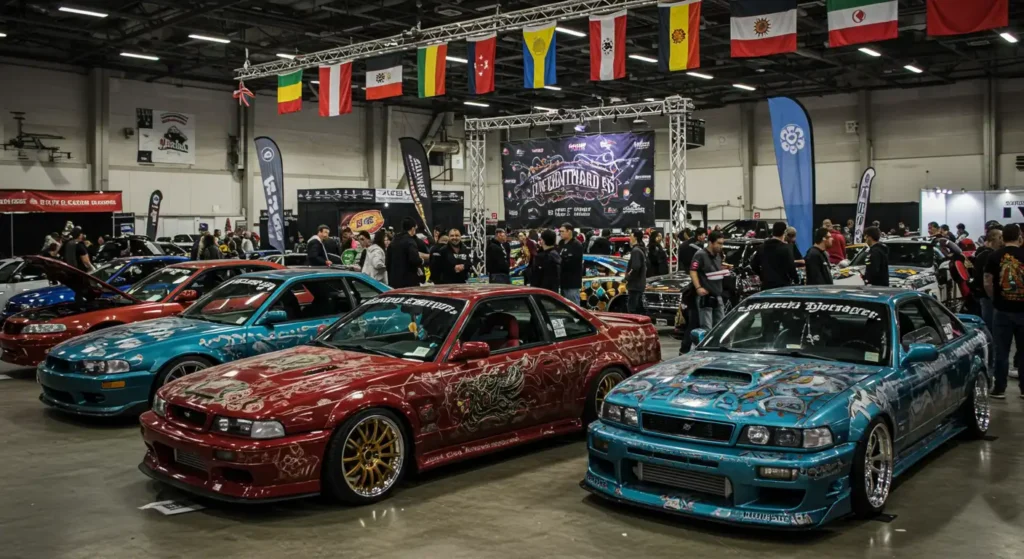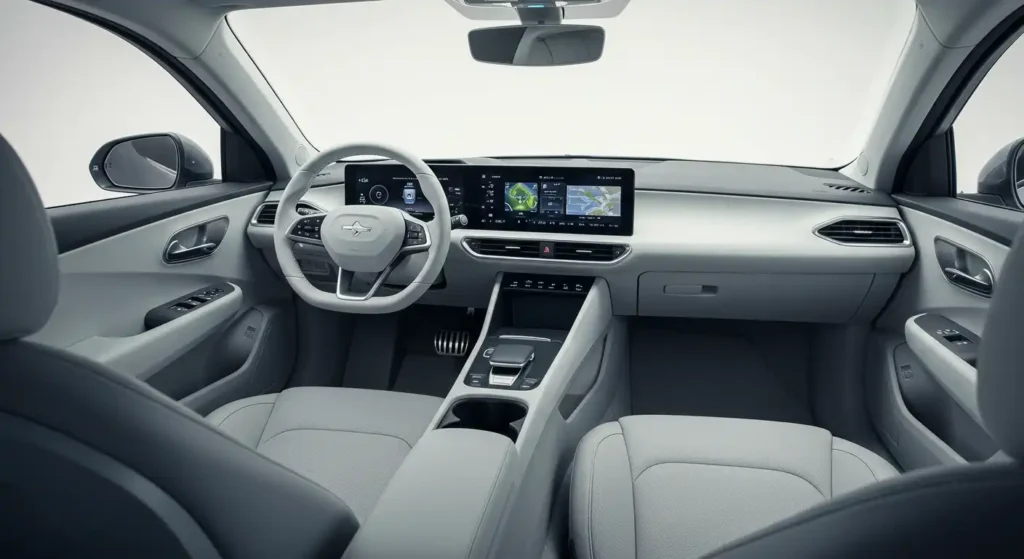The Future of Car Art in 2025
The automotive industry in 2025 is undergoing a transformation not just in terms of technology, but also in the way we personalize and view vehicles. Car art, a concept that once simply referred to custom paint jobs, is now an expansive, multi-faceted creative expression, influencing how vehicles look, feel, and even function. Personalization trends are taking center stage, redefining what it means to make a car truly yours. Whether it’s cozy interiors that make your car feel like a home or the growing movement of art cars that challenge traditional automotive aesthetics, car art in 2025 offers something unique for every driver.

Cozy Interiors: The Rise of Automotive Comfort Design
In recent years, vehicle interiors have evolved from utilitarian spaces to personalized sanctuaries, and this trend is accelerating in 2025. No longer are drivers satisfied with the bare essentials of seats, steering wheels, and dashboards. Today’s car art is focused on turning the interior of a vehicle into a comfortable, functional, and visually pleasing environment.
The Influence of Home Decor on Car Interiors
Interior designers and automotive manufacturers are increasingly drawing inspiration from home decor. The lines between interior design and automotive design are blurring, as car owners seek the same level of comfort and personalization they enjoy in their homes. This trend is reflected in the use of high-quality, sustainable materials such as eco-friendly leathers, recycled fabrics, and luxurious seating options.
For example, the growing trend of “luxury seating” is one way car manufacturers are enhancing the in-car experience. Seats are now designed not only for comfort but also for visual appeal. Think plush velvet, soft cashmere, or intricately woven fabrics that resemble the upholstery in high-end living rooms.
Additionally, custom lighting is being integrated into vehicle interiors, allowing drivers and passengers to set the mood with adjustable LED lights that can mimic natural sunlight or create a relaxing ambiance. Whether it’s soft ambient lighting or more vibrant colors for a dynamic look, this personalization trend is bringing a cozy and artistic touch to the automotive world.
Smart Tech and Functional Art
The integration of smart technology has further enhanced interior personalization. Smart dashboards, interactive displays, and voice-activated systems are becoming the norm. But what makes these technologies truly remarkable is their customization. Drivers can now program the car’s tech to adapt to their preferences, adjusting everything from the seat temperature to the in-car entertainment system, all while offering a sleek, futuristic design that feels more like art than machinery.
Art Cars: The Canvas of Automotive Expression
While cozy interiors are becoming a defining trend of personalized cars, the art car movement is gaining ground in 2025. Art cars, vehicles that are transformed into rolling masterpieces, have evolved from eccentric creations to a mainstream form of artistic expression. What was once seen as a niche movement is now gaining widespread popularity, especially as modern technology allows for more intricate and diverse artistic designs.
The Evolution of Art Cars
Art cars are no longer just about painting the exterior with vibrant colors or abstract patterns. In 2025, art cars are turning into multi-sensory experiences, blending traditional forms of art like painting, sculpture, and digital art with the power of interactive technology.
One example is the integration of augmented reality (AR) elements into art cars. These vehicles allow viewers to engage with the artwork in real-time through their smartphones or wearable devices. Drivers and passengers can interact with the car’s artwork, changing patterns or even creating their own custom designs using an app. It’s a fusion of art and technology that gives people an unprecedented level of creativity and personalization.
Digital and Light Art Integration
The rise of digital and light-based art is transforming how art cars are being designed. LED lights, projection mapping, and OLED screens are being incorporated into car exteriors to create ever-changing art. This type of vehicle design is not only visually striking but also functional, as some artists incorporate elements that provide useful information, such as traffic patterns or environmental data.
For example, some art cars feature lights that change in real-time based on driving conditions. A vehicle could display a vibrant, glowing pattern when driving through a city at night or shift to more subtle, calming hues on a scenic highway. These lights are not just decoration; they become part of the car’s identity and interaction with the outside world.
Sustainability and Eco-Friendly Customization
Another key trend influencing car art in 2025 is sustainability. As environmental concerns grow, car owners are seeking ways to personalize their vehicles without harming the planet. From eco-friendly materials to energy-efficient lighting and technologies, sustainability is now at the forefront of car personalization.
Green Materials in Car Art
Many vehicle manufacturers are focusing on sustainable materials for both the exterior and interior of the car. Natural fibers, plant-based paints, and biodegradable fabrics are becoming more common in vehicle customization. Car owners can now choose from a wide variety of environmentally friendly options that still offer a high level of design and comfort.
The idea of “eco-chic” is gaining traction as people realize that their cars can be personalized without compromising the environment. Manufacturers are even exploring the use of recycled materials for both car parts and accessories. For example, car seats made from recycled ocean plastics or dash trims crafted from upcycled wood are just a few examples of how the auto industry is shifting toward greener practices.
Energy-Efficient Designs
As the automotive industry moves towards electrification, many of the personalization trends are aligning with sustainable energy solutions. Electric vehicles (EVs) are becoming more common, and car art is now being designed with energy efficiency in mind. Solar-powered accents and LED lights that conserve energy are just a few of the ways that artists and manufacturers are making vehicles more eco-conscious while maintaining aesthetic appeal.

The Intersection of Culture, Identity, and Car Art
In 2025, car personalization has also become a way for drivers to express their individuality and culture. Car art has evolved beyond just an aesthetic choice; it has become a statement about who the driver is and what they value.
Celebrating Cultural Identity
For many, cars are an extension of their identity. Whether it’s through traditional craftsmanship, regional influences, or social causes, people are using their vehicles to celebrate their culture and heritage. Some choose to incorporate elements of indigenous art, historical motifs, or even political messages into their car designs.
For example, a rising trend in art cars is the inclusion of street art, graffiti, and other urban-inspired designs that reflect the driver’s lifestyle or beliefs. These designs not only give cars a unique, individual look but also tell a story, reflecting the personal journey of the driver.
The Rise of Custom Accessories
In addition to art cars, the rise of custom accessories that personalize cars has also taken off. From custom decals and steering wheel covers to bespoke seat covers and floor mats, every part of the car can be tailored to reflect an individual’s personality. In 2025, car accessories are no longer just functional—they are an extension of the artwork that defines the car itself.
The Future of Car Art
As we look to the future, one thing is clear: car art is no longer a static concept. It’s a dynamic and evolving field, where technology, culture, and personal expression intersect. From cozy interiors that embrace comfort and luxury to vibrant art cars that challenge traditional aesthetics, personalization trends are reshaping how we view and experience the vehicles we drive.
In 2025, car art will continue to push boundaries, embracing new technologies and materials that offer endless possibilities for creativity. Whether you’re looking to make your vehicle feel like a home away from home or transform it into a moving work of art, the world of car personalization is only getting started.

